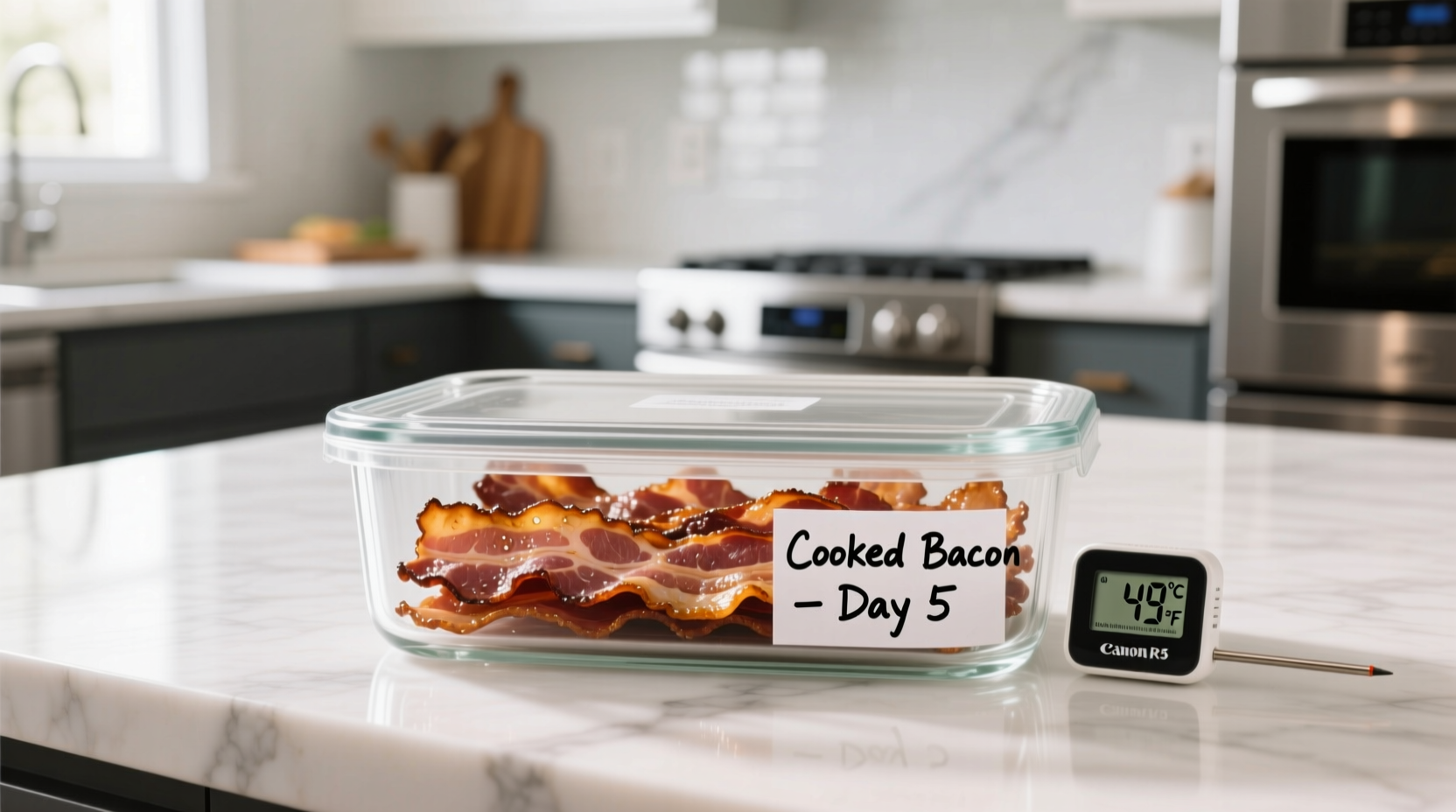Ever cooked a big batch of bacon only to wonder how long you can safely enjoy those crispy strips? You're not alone. Millions of home cooks face this question weekly as they try to balance convenience with food safety. Getting this right matters because improper storage could lead to foodborne illness or wasted food.
The Science Behind Bacon Shelf Life
Cooked bacon contains moisture and fats that create an ideal environment for bacterial growth when left at room temperature. The USDA Food Safety and Inspection Service emphasizes that cooked meats enter the "danger zone" (40°F-140°F) where bacteria multiply rapidly. Refrigeration slows this process significantly but doesn't stop it completely.
Unlike raw bacon which contains curing agents that extend its shelf life, cooked bacon has lost some of these preservatives through the cooking process. This makes proper storage techniques crucial for maintaining both safety and quality.
Storage Conditions That Make the Difference
Not all refrigerator storage is created equal. Your actual shelf life depends on several critical factors:
| Storage Method | Temperature | Expected Shelf Life | Quality Preservation |
|---|---|---|---|
| Airtight container | 35-38°F (1.7-3.3°C) | 5 days | Excellent crispness retention |
| Plastic wrap | 35-38°F (1.7-3.3°C) | 3-4 days | Moderate crispness retention |
| Aluminum foil | 35-38°F (1.7-3.3°C) | 3 days | Fair crispness retention |
| Left uncovered | 35-38°F (1.7-3.3°C) | 1-2 days | Poor crispness retention |
This comparison comes from the USDA Food Safety and Inspection Service's refrigerator guidelines, which provide evidence-based recommendations for home food storage.
Step-by-Step Storage Protocol for Maximum Freshness
Follow these professional kitchen techniques to extend your cooked bacon's shelf life:
- Cool immediately: Transfer cooked bacon to a wire rack for 5-10 minutes to remove excess grease and cool rapidly
- Portion control: Divide into single-serving portions to avoid repeated opening of storage containers
- Air removal: Press plastic wrap directly against bacon surface before sealing container to minimize oxygen exposure
- Strategic placement: Store in the refrigerator's main compartment (not the door) where temperatures remain most consistent
- Label clearly: Note cooking date with marker directly on container for easy reference

When Refrigeration Isn't Enough: Freezing Options
If you won't consume your cooked bacon within 5 days, freezing extends shelf life significantly. According to the National Center for Home Food Preservation, properly frozen cooked bacon maintains quality for 2-3 months.
For best results when freezing:
- Place strips between parchment paper to prevent sticking
- Use vacuum sealing for longest freezer life
- Thaw overnight in refrigerator before reheating
Spoilage Signs You Should Never Ignore
Even within the recommended timeframe, always check for these spoilage indicators before consuming:
- Visual changes: Unusual discoloration (green, gray, or slimy appearance)
- Texture changes: Excessive sliminess or stickiness when touched
- Odor changes: Sour, rancid, or otherwise unpleasant smells
- Taste test (last resort): If other signs are questionable, a small taste may reveal off-flavors
When in doubt, throw it out. The USDA Food Safety and Inspection Service emphasizes that consuming spoiled meat carries significant health risks that outweigh any potential food savings.
Safe Reheating Methods for Perfect Crispness
Proper reheating restores that desirable crisp texture while ensuring food safety:
- Oven method: 350°F for 5-8 minutes on wire rack over baking sheet
- Skillet method: Medium heat for 1-2 minutes per side
- Recommended internal temperature: 165°F (73.9°C) as verified by food thermometer
Microwave reheating often produces uneven results but works in a pinch - use 30-second intervals at 50% power to prevent overcooking.
Special Considerations for Different Bacon Types
Not all bacon follows the same storage rules. These variations affect shelf life:
- Nitrate-free bacon: Typically has shorter shelf life (3-4 days) due to lack of preservatives
- Turkey bacon: Slightly shorter shelf life (3-4 days) due to different fat composition
- Pre-cooked store-bought: Follow package instructions, usually 7-10 days after opening
These distinctions come from research documented by the FDA Food Code, which provides specific guidance for different meat products.
Practical Storage Timeline for Busy Households
Understanding the progression of quality changes helps you plan meals effectively:
- Day 1-2: Optimal crispness and flavor; ideal for salads, sandwiches, or standalone serving
- Day 3-4: Slightly reduced crispness; best reheated before serving
- Day 5: Final safe day; may require additional crisping during reheating
- Day 6+: Discard regardless of appearance due to potential bacterial growth
This timeline reflects data from the World Health Organization's food safety guidelines, which emphasize that visible spoilage often appears after dangerous bacteria have already multiplied to unsafe levels.
Maximizing Your Bacon Investment
Consider these practical strategies to reduce waste while maintaining safety:
- Freeze portions you won't use within 3 days
- Incorporate leftover bacon into dishes with shorter shelf lives (like salads or pasta)
- Use bacon fat for cooking to maximize flavor extraction
- Plan meals strategically around your cooking schedule
By following these evidence-based guidelines, you'll enjoy delicious bacon while minimizing food safety risks and reducing household food waste.











 浙公网安备
33010002000092号
浙公网安备
33010002000092号 浙B2-20120091-4
浙B2-20120091-4